Mammoth Site, Hot Springs, South Dakota
Steven Dutch, Professor Emeritus, Natural and Applied Sciences, Universityof Wisconsin - Green Bay
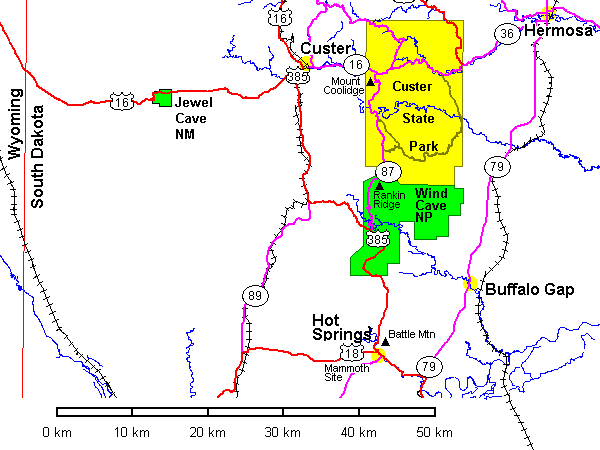
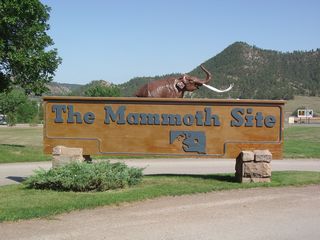 |
The Mammoth Site on the southern outskirts of Hot Springs, South Dakota, is a museum built around an active excavation of mammoth fossils. |
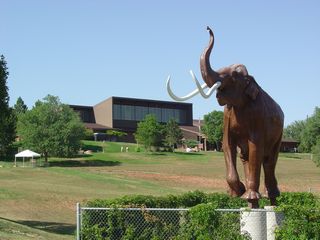 |
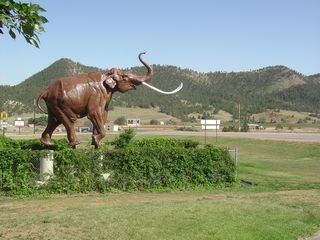 |
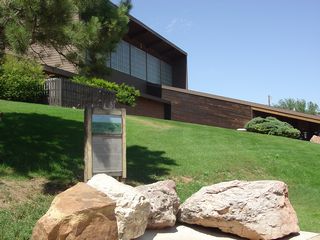 |
 |
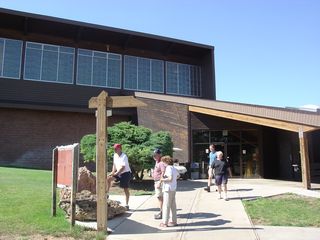 |
|
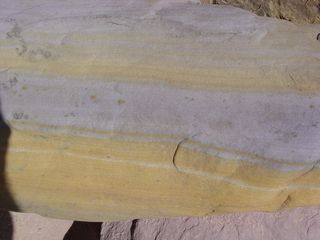 |
A boulder of Jurassic Unkpapa Sandstone near the museum entrance. |
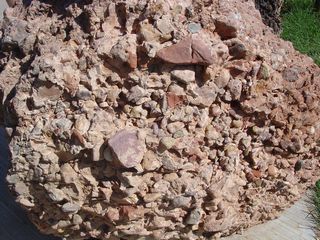 |
Cemented gravel of Pleistocene age. Cemented gravels like this are common around Hot Springs, cemented by calcium carbonate dissolved out of limestone. |
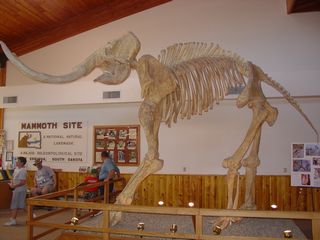 |
Mammoth skeleton in the museum. |
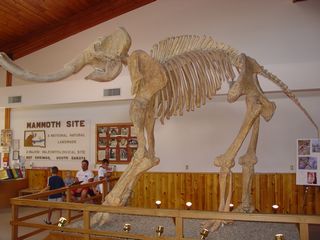 |
The Excavation
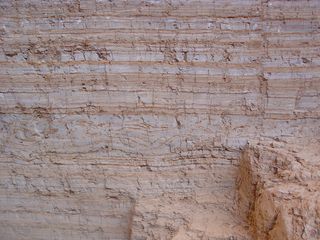 |
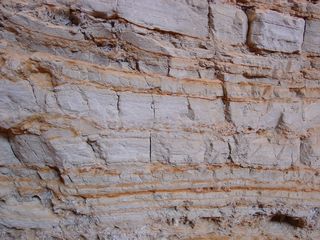 |
|
Above: laminated pond sediments. The site was a flooded sinkhole during the Pleistocene. Mammoths ventured in to drink, then were sometimes unable to get back up the banks. It's easy to get the idea of herds of mammoths meeting a sudden death, but the number of skeletons and the estimated duration of the sinkhole imply roughly one mammoth death per decade. |
Below: dipping layers from the sides of the pond. |
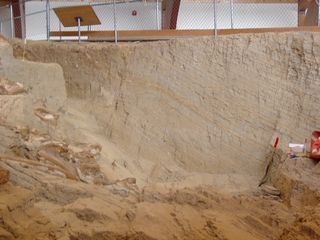 |
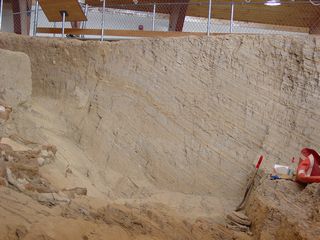 |
/tr>
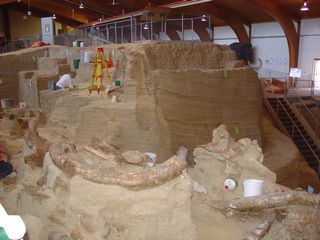 |
General views of the excavation. Since the site is being actively excavated, no two visits will show the same things. |
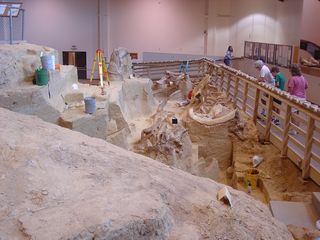 |
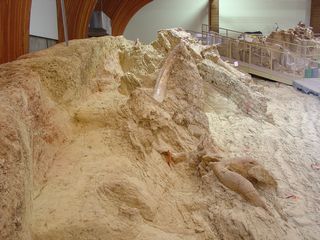 |
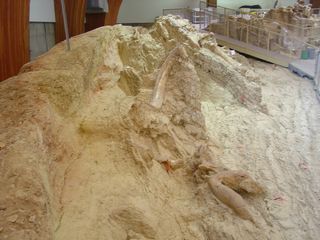 |
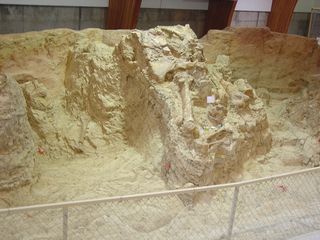 |
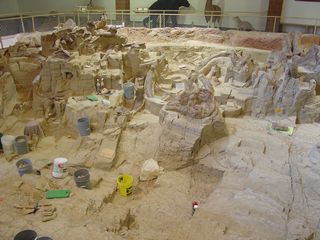 |
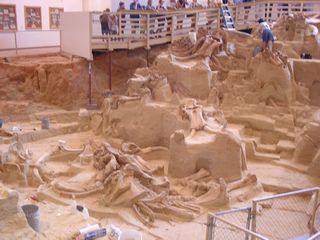 |
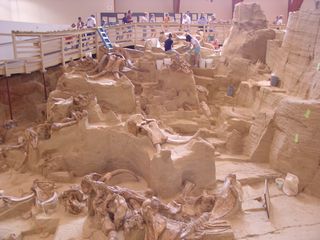 |
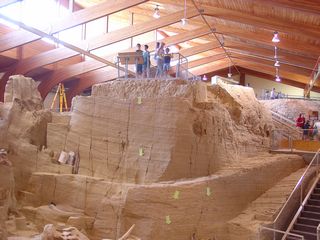 |
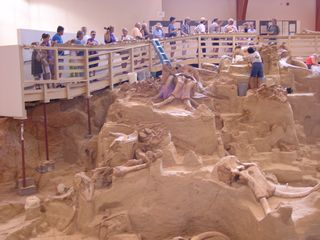 |
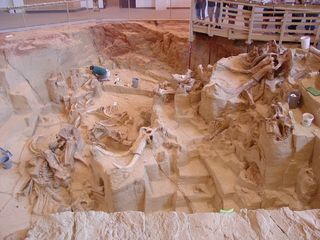 |
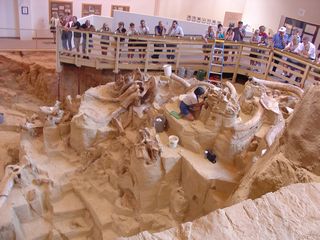 |
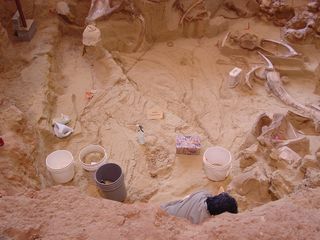 |
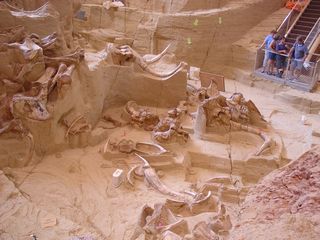 |
 |
| Excavation of blocks for accurate three-dimensional mapping. |
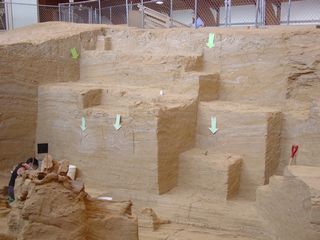 |
Mammoth Bones
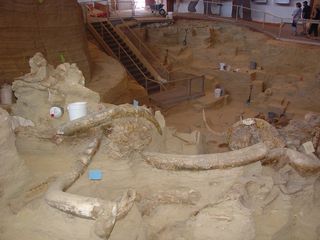 |
Mammoth Tusks in situ |
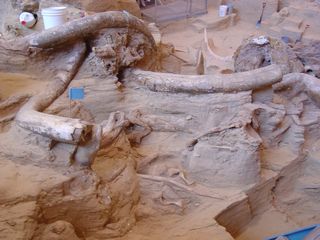 |
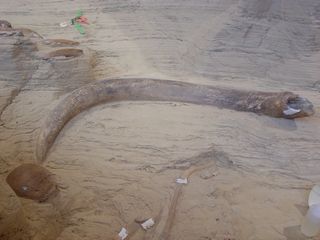 |
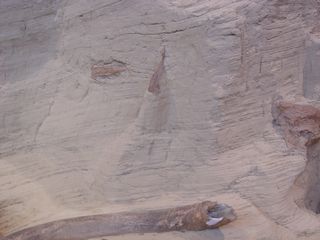 |
|
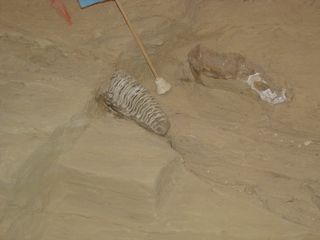 |
Left and below:Mammoth molars in situ. |
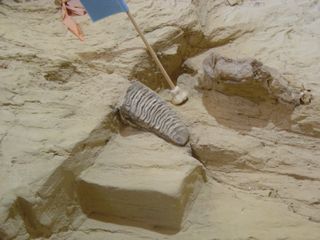 |
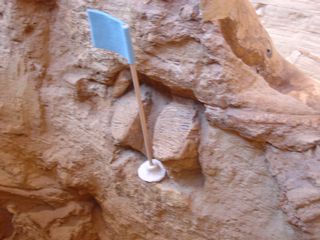 |
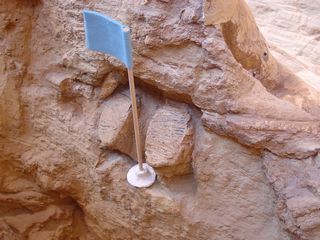 |
Below: Mammoth skull in situ. |
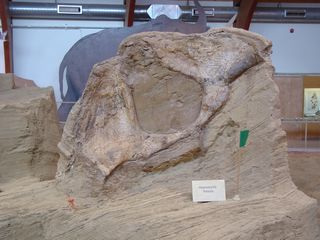 |
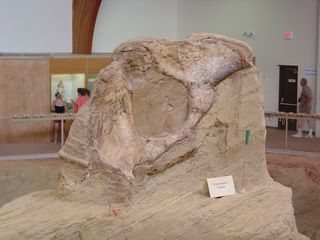 |
| Below: mammoth footprints (arrows) deforming the layers of what were then soft mud. | |
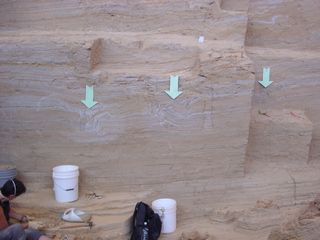 |
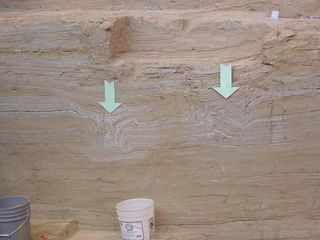 |
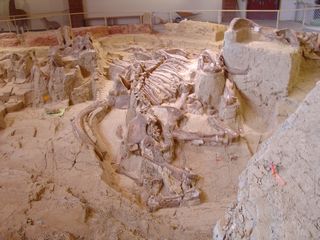 |
Left and below: nearly complete skeletons in situ. |
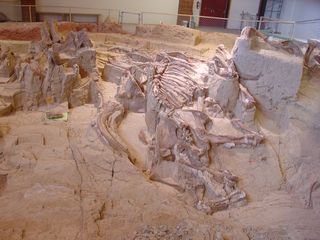 |
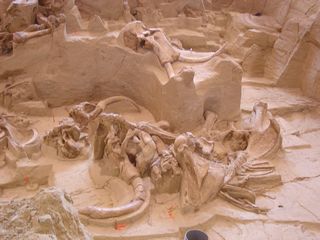 |
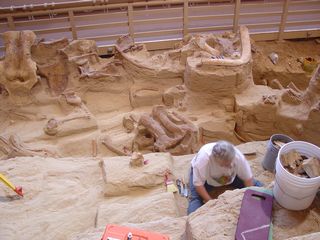 |
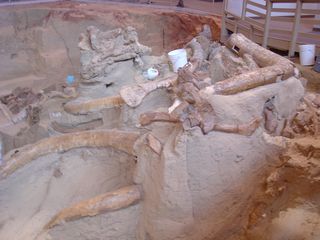 |
Museum Exhibits
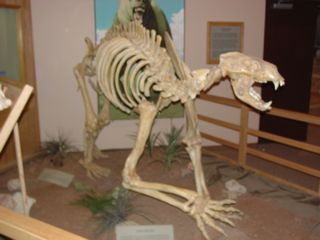 |
Skeleton of a cave bear. |
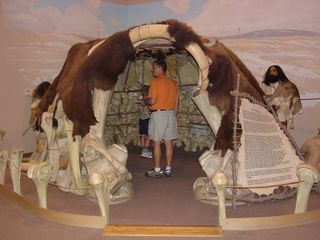 |
In the treeless steppes of Central Asia, mammoth bones were a handy building material and remains of mammoth bone huts have been found. The bones were probably scavenged rather than obtained by killing mammoths. |
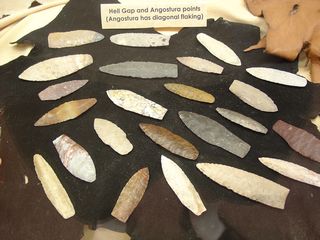 |
Left and below: projectile points associated with prehistoric animal
remains. Not arrowheads, but probably lance points launched with a throwing stick or atlatl. |
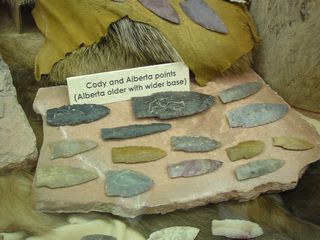 |
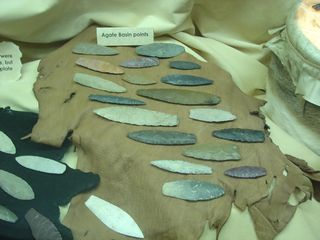 |
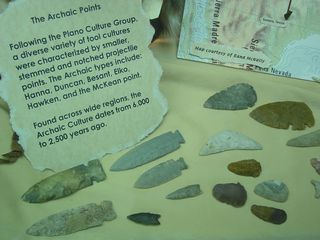 |
Did humans kill off the mammoths? That's hotly debated, but in the
Americas, Australia, Madagascar and New Zealand, when humans showed
up, the large animals went extinct. Images of early hunters killing mammoths are dramatic and popular fixtures in museums. Although it did happen, most of the animal remains associated with early humans are small animals, prompting one archeologist to ask "if these people were such rough, tough mammoth hunters, why were they eating bunny rabbits?" |
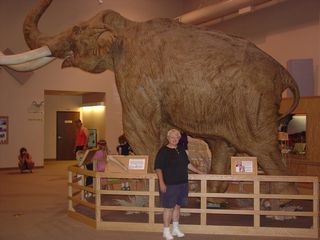 |
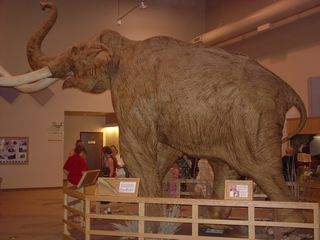 |
| Above: mammoth reconstruction. | Below: pygmy mammoths. A contradiction in terms, like "jumbo shrimp" or "baby grand?" No. Large animals on islands frequently become dwarfed as a response to scarce resources. Mammoths were good swimmers and made it to Sardinia, Corsica, and the Channel Islands off California, where they downsized to roughly pony size. The very last mammoths on earth were dwarfs on Wrangel Island off the coast of Siberia, and they survived almost until the time of the earliest Pyramids. |
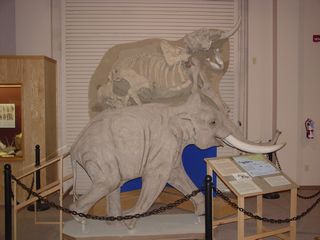 |
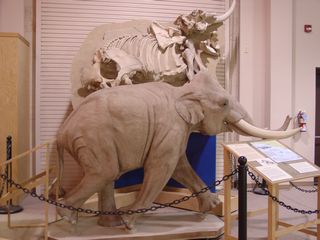 |
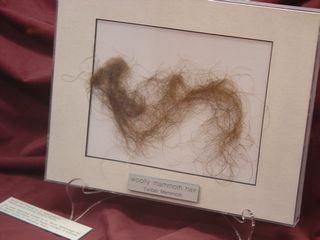 |
Mammoth hair. The famous frozen mammoths of Siberia were not flash-frozen. Their stomachs did not contain today's tundra vegetation, leading some people to picture them eating bananas and papayas. In reality, polar regions in the Pleistocene were dry grasslands, an ecosystem that has all but vanished today. |
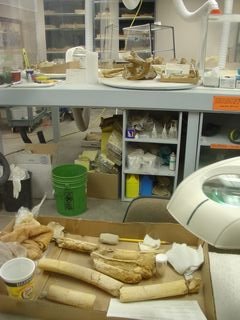 |
View of the specimen preparation area. |
Return to Historic Sites Index
Return to Virtual Field Trips Index
Created 7 April 2003, Last Update 06 June 2020